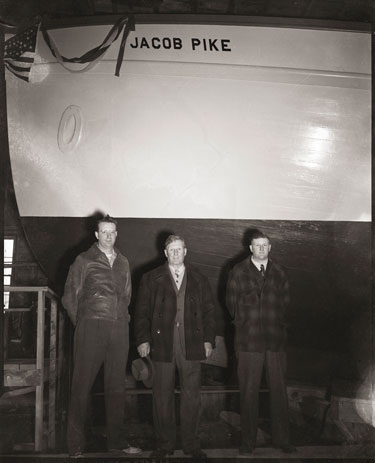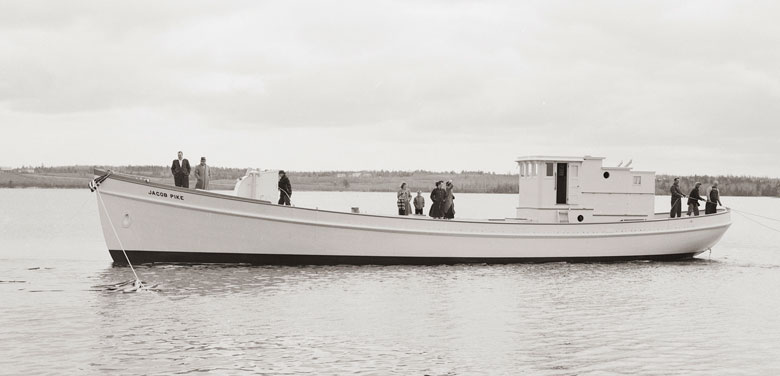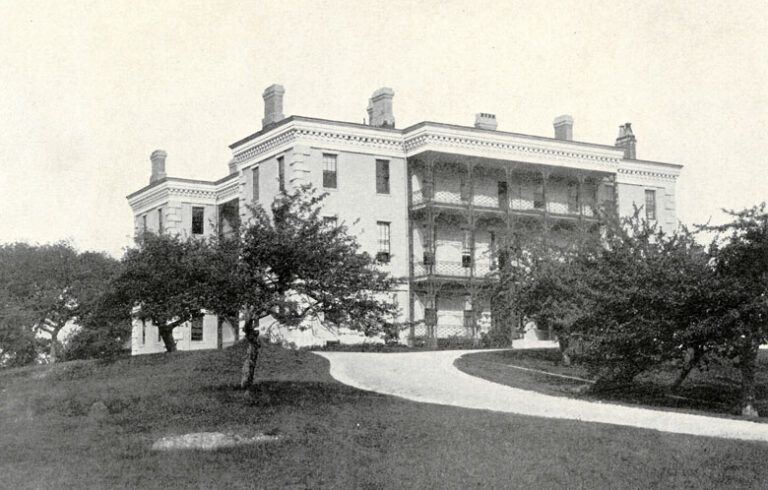It was April 28, 1949, when the 83-foot sardine carrier Jacob Pike was launched with some fanfare in Thomaston. Built by Newbert & Wallace for the Holmes Packing Company, she was the third sardine carrier launched from Midcoast boatyards that year.
The launch of a new boat was always a time of celebration. To the new owners it was the excitement and hope of prosperity and return on their investment, and, to the builders, it was the satisfaction of another completed job of turning a designer’s vision into a reality.
It’s no surprise that each launch was documented by photographers eager to supply the various fishing and boating publications as well as an opportunity to sell prints to the new owners.
In 1950, there were 46 active canneries employing more than 10,000 people.
Sardines, also known as herring, were big business in Maine in the post-war economy. In 1950, there were 46 active canneries employing more than 10,000 people. It was in 1950 that Maine recorded its largest domestic landing of 90,557 metric tons of herring before beginning a steady decline.
The industry needed the specialized sardine carriers to transport the fish caught in weirs or seine nets back to the factories, and scores were built. The Jacob Pike outlasted most of them.
The Pike was named after the father of Moses Pike, part of the Pike family fishing dynasty of Downeast Maine. She was one of the first carriers to offer refrigerated storage and a modern electrical system that made her state-of-the art.

She was nearly identical to her sister ship the Mary Anne which had been launched the year before and was capable of storing 1,470 bushels of herring.
After the fall of the sardine industry she was used to carry fish and lobster bait. In 2007, she was purchased by the Penobscot Marine Museum which had hopes of turning her into a floating museum but could not secure the funding needed so she went back to work for a few more years.
The photos of the Pike’s launch day, included here, were taken by Jim Moore of Rockport. Moore was the Midcoast correspondent for the Portland Press Herald and worked freelance for other publications, like the Atlantic Fisherman that initially published these photos.
He was also friends with fellow photographers Kosti Ruohomaa and Carroll Thayer Berry, with whom he published Maine Coastal Portrait in 1959. He died in 2001.
Ironically, these photos of the Jacob Pike’s “birth” reappeared at what seems to be the time of her final demise. She currently lies on the bottom of the New Meadows River off Harpswell, a victim of one of the big January storms as she was waiting to be repaired by a new owner.
After a few months underwater it seems unlikely that she can be saved, though it’s not deterring Sumner Rugh, the great-grandson of her namesake, from trying.
Now a navigational hazard and leaking oil, it’s a sad end for such a noble vessel.
In 2022, The Penobscot Marine Museum acquired a collection of several thousand of Jim Moore’s maritime-related negatives, and an exhibit drawing from it will be on display at the Camden Public Library during the month of April. “Jim Moore—Midcoast Correspondent” will be on display in the Picker Room of the Camden Public Library, April 2-30. Captions for the exhibit were written by maritime historian Maynard Bray.
The public is welcome to join the museum’s digital curator Matt Wheeler for an illustrated talk at Camden Library on Tuesday, April 16, 6:30-8 p.m. The presentation will explore Moore’s life and work.
The museum’s new exhibit, “Powering Up: The Evolution of the Maine Lobsterboat,” opens May 23.
Kevin Johnson is the photo archivist at the Penobscot Marine Museum in Searsport. See PenobscotMarineMuseum.org for more information about exhibits and collections.





